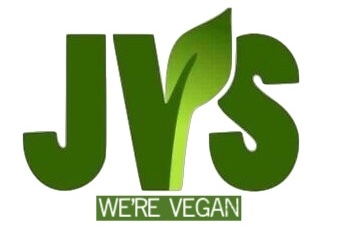Article written by Felicity Lawrence for the Guardian
The debate about animal welfare has intensified
The year 2012 marked a leap forward for animal welfare in the European Union. Farmers were no longer allowed to keep egg-laying hens in barren battery cages smaller than an A4 sheet of paper. Instead, the minimum requirement now is that hens are kept in a cage the size of an A4 sheet of paper, with an extra postcard-sized bit of shared space that allows them to scratch and nest. These are known as enriched cages.
Animal welfare campaigners would like to see them abolished too, saying they barely make a difference to the birds’ ability to express their natural behaviour and live free from stress. Around half of the eggs we eat are still produced in caged systems.
Full debeaking to prevent hens pecking each other is no longer allowed either, but beak clipping is still permitted in egg-laying hens. Their primary sensory organ is typically clipped at a day old, whether caged or free range. Progress here is that farmers must now use infrared lasers to carry out the process rather than the hot blade of previous days. It is cleaner but remains painful to the bird.
Industrial egg-laying hens have been bred to produce more and faster, laying about 320 eggs over a life span of about 72 weeks, compared with a productive life of around four years in more traditional breeds that lay at a fraction of the rate. This high intensity of production tends to affect their bones, which can become brittle and easily broken; the birds become stressed – which is why beak clipping is necessary – and listless.
New battle lines over the welfare of factory-farm animals were being drawn as President Obama arrived in London on Thursday to promote the Transatlantic Trade and Investment Partnership (TTIP) with Europe. The US, long regarded as a laggard on compassion in farming, is pushing for Europe to open up its markets to American poultry, which is produced to different standards. Debate about those standards has ignited in recent weeks in the US, with a series of high-profile media reports on the cruelty inherent in its livestock production methods. The issue was back on the agenda in the UK too this month, after a government move to allow the poultry industry to rewrite welfare codes. A dramatic U-turn in response to the public outcry at the proposal has once again thrown the spotlight on how we treat our farm animals.
The impact of intensive production on disease in broiler chickens reared for meat has also come under scrutiny once more. The government watchdog, the Food Standards Agency, was forced to announce that it is suspending its retailer-by-retailer tests of broilers for the food poisoning bug campylobacter. A change in processing at factories has made it impossible for the FSA to continue its highly effective work naming and shaming supermarkets with the worst bacteria scores.
The lives of broiler chickens are not much easier to contemplate than those of the egg-layers. Much research has been devoted to genetic selection to produce the most economically efficient bird. The RSPCA produced a pamphlet several years ago that for me still provides the best illustration of what this means for the chickens. A series of photographs taken a few days apart showed a normal, traditionally bred egg-laying hen as it grows from chick to maturity. Underneath were parallel pictures of the modern broiler taken at the same intervals. By day nine, the broiler’s legs can barely keep its oversized breast off the ground. By day 11, it is puffed up to double the size of its cousin. It looks like an obese nine-year-old standing on the legs of a five-year-old. By day 35 it looks more like a weightlifter on steroids and dwarfs the egg-laying hen.
The intensively produced broiler is typically kept in an artificially lit shed of around 20,000-30,000 birds. Computers control heating and ventilating systems and the dispensing of feed and water. The water and feed are medicated with drugs to control parasites or with mass doses of antibiotics as necessary. Units are cleaned only at the end of each cycle, so after two to three weeks the floor of the shed is completely covered with faeces and the air tends to be acrid with ammonia.
Keeping animals in such close confinement enables disease to spread rapidly. Although the industry says it has reduced its antibiotic use dramatically since 2012 and now produces nearly half the country’s meat while accounting for only 22% of all antibiotics used on UK farm animals, there is still serious concern that overuse of drugs in animals has contributed to antibiotic resistance. Experts have warned that we are close to the point at which human medicine may find itself without effective life-saving drugs.
In the UK, the stocking density is typically 38kg of bird per square metre – an area less than an A4 sheet of paper for each mature chicken. Free-range and organic production insist on more space, but our typical Sunday roast chicken will have more room in the oven when dead than it had to live in on the farm. To maximise yields, farmers often overstock their sheds at the beginning of the cycle and then thin out some of the birds for slaughter because otherwise the chickens would not have enough space to grow. Thinning – when workers cull some of the chickens, catching them by the legs – is stressful and the point at which diseases can often enter a shed. The practice contributes significantly to the prevalence of the campylobacter in flocks. Campylobacter is potentially deadly to humans and the most common cause of food-borne illness in humans in the UK, affecting more than 250,000 people a year.
The neck skin of chickens is often the most highly contaminated part of the bird. Processors have now started cutting it off at the factory, which adds to costs but removes some of the bacteria load – good news for consumers, but since it was this part of the bird that the FSA was collecting for tests, the development has also scuppered the programme. The FSA has said it remains committed to tackling campylobacter as a priority.
Animal welfare tends to be marginalised in times of austerity, relegated to a luxury in the face of the need for cheap food. But if the government thought people were too hard up to care any more, they were wrong.
When news broke that the Department for Environment, Food and Rural Affairs (Defra) planned to hand over the job of drawing up guideline codes on farm animal welfare to the industry, beginning with the poultry sector at the end of this month, nearly 150,000 people signed petitions objecting. Defra quickly abandoned the plan, to the dismay of the British Poultry Council. “We were very disappointed with the decision, the intention was to bring the guidance up to modern standards,” said policy director Richard Griffiths. “Defra doesn’t have the resources to review the codes any more.”
A Defra spokesman said: “We have the highest standards of animal welfare in the world, and no changes have been proposed to the legislation. We want to draw more closely on the expertise of the farming industry to ensure our welfare codes reflect the very latest scientific and veterinary developments.
“We believe we can achieve this by retaining the existing statutory codes. The work of the farming industry has been invaluable and we will continue to work with them to ensure our guidance is updated to best help them to comply with our welfare standards.”
The welfare codes have not been updated since 2002. (About a quarter of Defra’s budget was cut under the previous coalition government, and the department will see 15% further cuts over the course of this parliament.)
While the state appears in retreat on standards, big business, responding to the concerns of its customers, is, ironically, leading the pace in some areas.
In the UK and mainland Europe, McDonald’s, Sainsbury’s, the Co-op, M&S and Waitrose have moved to cage-free production for the eggs they sell. Tesco eggs are now also around 70% cage-free, while Waitrose and M&S have applied the same standards to eggs used as ingredients in other products too. In the US, Walmart has made a commitment to phase out caged eggs over the next 10 years. The campaign group Compassion in World Farming has been applying pressure on Asda in the UK to follow its parent company’s example.
Asda said that retaining the prices that enriched cage systems made possible gave consumers the choice on welfare standards. “Our customers tell us they want choice, which is why we offer a wide promotional range of eggs from Smart Price through to free range, all clearly labelled for customers to make an informed decision.”
For Philip Lymbery, chief executive of Compassion in World Farming, the argument that intensive farming is justified because poorer people need cheap meat or eggs is insulting to those on lower incomes. An intensively reared chicken is three times higher in fat, one third lower in protein, and lower in beneficial omega-3 fatty acids now than it was in the 1970s.
“Keeping chickens in cruel conditions produces a poorer product,” he said. “Why do we think it acceptable to expect people on lower incomes to have to feed their children poorer factory-farmed food?”
POULTRY BY NUMBERS
■ There are more chickens in the world than there are any other species of bird: more than 50 billion of them are reared annually for food.
■ The UK egg market produced 10.02 billion eggs in 2015 and a further 2 billion were imported.
■ The British poultry meat industry produces approximately 875 million chickens, 17 million turkeys, 16 million ducks and 250,000 geese a year for consumption.
■ Poultry accounts for around half (49%) of all meat eaten in the UK.
■ Each day, 33 million eggs are eaten in the UK.
■ Around 47% of eggs sold are free range.
■ The UK egg industry is estimated to be worth £895m in sales.
Sources: British Egg Industry Council / British Poultry Council/ Compassion in World Farming




















